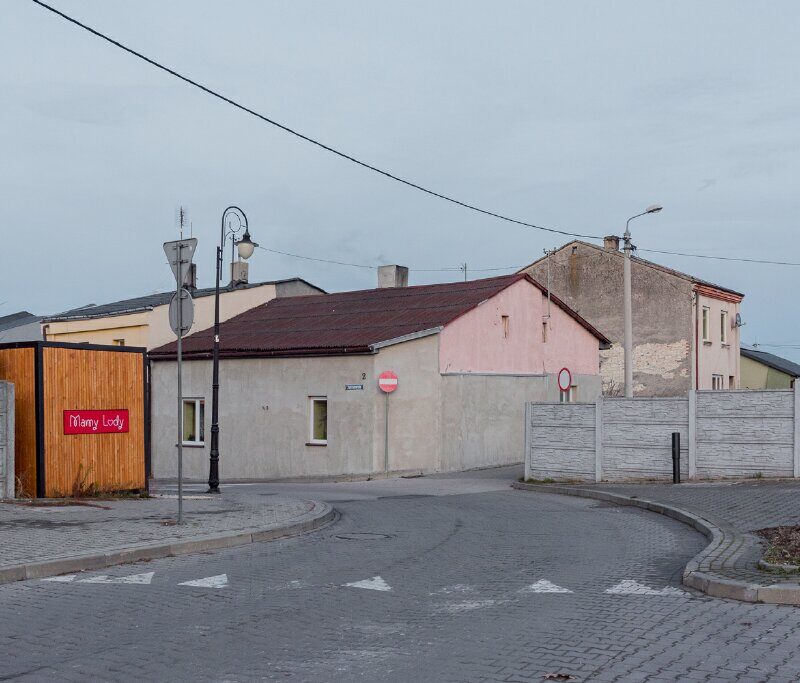Joanna Szpak Ostachowska, Small Town
Curator: Joanna Kinowska
I grew up in a town like many others, with its central square, streets extending from it, church, market. This is where life unfolds. But take a few steps to the side and you will find yourself in a quarter emanating a different aura. A disturbing yet compelling pocket. Neglected houses. Flaking paint. Overgrown gardens. Stillness and emptiness.
This is what I see. But what am I looking at?
The street I grew up on once ran through a Jewish ghetto, within which, during World War II, 9,000 Jews were pressed. Some died in the ghetto; most were taken to the Treblinka extermination camp. Before the war, the Jewish population of ‘my’ town comprised sixty percent of inhabitants. This is all supposed to be history now: war, Poles, Jews, Germany, the Shoah. Hatred. Indifference. Sometimes heroism. Seized property. Shame. In the end, silence. Memory/amnesia.
On a former Jewish house, I find a faded inscription: ‘Space gives us signs, speaks to us simply […], not literally […]. Let us give it what it wants.’ Space cannot be converted into a museum, but it remains as a visible trace of vanished neighbours.
Small Town documents what remains in present-day Polish towns of the places and spaces where Polish Jews once lived their lives. An attempt at reading the remains, it captures what is still visible and tangible in the Polish landscape, and what repeats, while reaching out for what hovers unacknowledged in the air. With this cycle, I attempt to break the silence.
The series’ photographs were taken, in 2019–2020, inside the boundaries of former Jewish ghettos in towns within the Germans’ General Government zone of occupation, a territory encompassing the present-day Polish voivodeships (provinces) of Lublin, Małopolska, Mazovia, Podlaskie, and Świętokrzyskie. From March 1942 to November 1943, ‘Operation Reinhard,’ the German programme to murder Jews living in the General Government zone, resulted in as many as two million Jews being sent to their deaths in Nazi extermination camps.
.
Joanna Szpak Ostachowska (born 1976, Lublin, Poland) is an activist, journalist, and coach, and a photographer of urban spaces and plants whose practice is informed by the anthropological aspect of visuality. She is a graduate in Polish Studies from the University of Warsaw, and was a participant in the Sputnik Photos collective’s Mentoring Programme for 2019–2020. She is the author of the photobook Chwasty [Weeds]. Her works have been exhibited at the Centre of Contemporary Art in Toruń, in 2015, and at the FotoArtFestival in Bielsko-Biała, in 2019. She was an IGPOTY finalist, in 2017, and participated in the Arsenal Gallery and Ostrøv publishing collective’s ‘Places of Everyday Life’ contest, in 2019. She has done assignments for publications including Warsaw Insider, Ładne Bebe, and Szeroki Kadr. She lives and works in Warsaw.
.
IMPORTANT INFORMATION! Due to sanitary restrictions max 50 people are allowed to stay in the exhibition space, addition to the artists and curators.
Place:
Tytano
ul. Dolnych Młynów 10
Exhibition open:
26.06. - 19.07.2020
Thu-Fri 3 pm-7 pm
Sat-Sun 11 am-7 pm
Tickets:
Free admission





